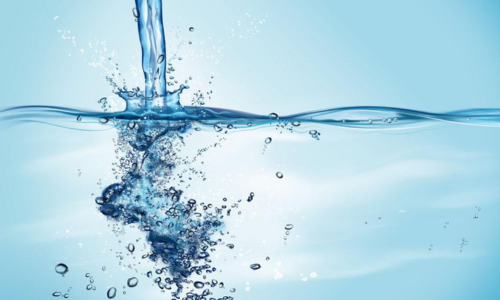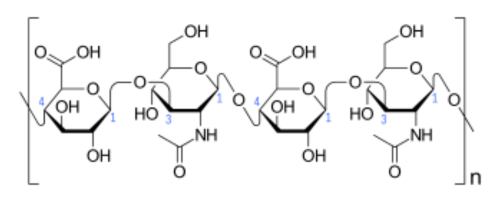
If you frequently use skincare products, you’ve likely noticed that many of them contain hyaluronic acid. What exactly is so magical about this substance that makes formulators so fond of it? This text will delve into the powerful moisturizing properties of hyaluronic acid in skincare.
What is Hyaluronic Acid?
Hyaluronic Acid (HA) is a naturally occurring polysaccharide molecule found in human tissues. It is widely present in the skin, joints, and eyes, playing crucial biological roles.
Scientists first isolated HA from the vitreous body of cow eyes. In the 1950s, they applied it for the first time, not as a skincare ingredient, but as an adhesive in ophthalmic surgery. Later on, scientists, driven by their research spirit, developed some derivatives of it for various medical fields. In the past twenty years or so, skincare has only begun using HA as a moisturizing agent.
Why Can Hyaluronic Acid Moisturize?
The unique chemical structure and biological functions of hyaluronic acid attribute to its excellent moisturizing effect. Hyaluronic acid interacts with water molecules to create a hydration layer, absorbing and retaining moisture. This strengthens the skin barrier, resulting in long-lasting hydration. Consequently, hyaluronic acid has become one of the widely used moisturizing ingredients in skincare and beauty products.

Hydration Effect: Hyaluronic acid molecules contain numerous hydroxyl (-OH) and carboxyl (-COOH) groups. These groups can form hydrogen bonds with water molecules, resulting in the creation of a hydration layer. The hydration effect enables hyaluronic acid to attract and retain surrounding water molecules, thus significantly increasing the moisture content on the skin surface. This results in long-lasting moisturizing effects.
High Water Absorption: Hyaluronic acid molecules possess extremely high water absorption capacity. Their molecular weight and structure determine their ability to absorb water. Hyaluronic acid absorbs water from the environment, forming a gel-like substance that creates a moisturizing film on the skin’s surface, preventing moisture loss.
Water Retention Ability: Hyaluronic acid can constantly release water within the skin tissues, forming a water storage system. It creates pathways for moisture between the skin surface and the stratum corneum, helping water penetrate and store, thus maintaining skin hydration for an extended period.
Affinity with the Stratum Corneum: Hyaluronic acid molecules have good affinity with the surface of the stratum corneum cells. They can interact with the lipid layer between the corneum cells, enhancing the skin barrier function and reducing water loss.
How to Choose Hyaluronic Acid?
Selecting the appropriate molecular weight of hyaluronic acid based on your skin type and needs is crucial.
Different molecular weights of HA have varying moisturizing effects in skincare products. Low molecular weight HA, with smaller molecules, can penetrate the skin more easily and provide quick moisturizing effects, but its persistence may be relatively poor. It is suitable for quickly replenishing moisture but not for long-term use.
Medium molecular weight HA has good permeability and a certain long-lasting moisturizing effect. It is suitable for all skin types, though it is relatively more expensive.
High molecular weight HA can form a stable hydration layer, providing long-lasting moisturizing effects and having a high affinity with the skin. This makes it suitable for long-term use.
Table 1. the moisturizing effect of different molecular weights
| Molecular Weight | Moisturizing Effect | Pros | Cons |
| Low | Rapid absorption, short-term hydration | Quick hydration, suitable for instant use | May lack long-lasting effects, not for prolonged use |
| Medium | Good penetration, moderate long-lasting effect | Versatile, suitable for various skin types | Relatively higher cost, not for high-demand hydration |
| High | Stable hydration, long-lasting effect | Long-lasting hydration, high skin affinity | Slower absorption |
Table1. shows the moisturizing effects of different molecular weights and their respective advantages and limitations. For more information about hyaluronic acid, check out Stanford Chemicals Company (SCC).
Various choices of HA
Based on the moisturizing effect of HA, scientists have developed hyaluronic acid with different structures through various methods to meet different skin care needs.
Sodium hyaluronate:
The sodium salt of hyaluronic acid is more stable and has stronger penetrating power. It is the most common one in the ingredient list of cosmetics.
Acetylated sodium hyaluronate:
This is hyaluronic acid that has undergone an acetylation reaction. The addition of acetyl groups makes hyaluronic acid both hydrophilic and lipophilic.
Hyaluronic acid cross-linked polymer:
Ultra-high molecular weight polymer obtained through cross-linking reaction of hyaluronic acid. It can form a breathable film on the surface of the skin to lock in moisture and moisturize.
Hydrolyzed sodium hyaluronate:
High molecular weight hyaluronic acid is decomposed by enzymes to form low molecular weight hyaluronic acid. It can quickly penetrate the skin, lock in moisture deeply, and repair the bottom of the skin.
Conclusion
Hyaluronic acid’s versatility and efficacy in maintaining skin hydration make it an indispensable ingredient in modern skincare. As science progresses, we anticipate discovering even more innovative applications for this remarkable molecule, enhancing its significance not only in skincare but also in other fields. Understanding the various types of hyaluronic acid can assist you in making informed decisions about your skincare regimen, whether you’re looking for immediate hydration or long-term moisture retention. This ensures that your skin stays healthy, hydrated, and glowing.
